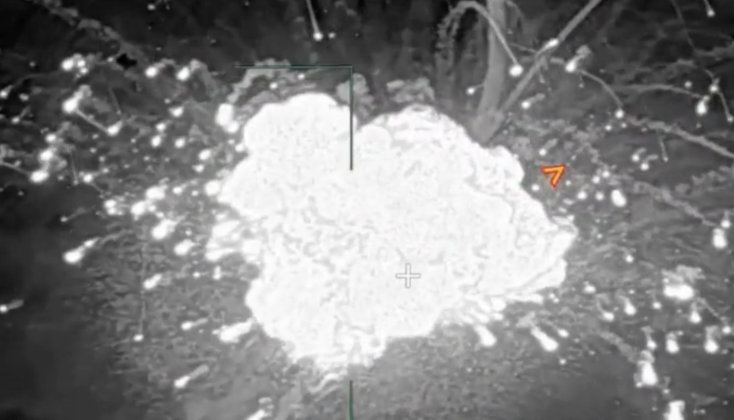News
Footage Shows Russian Iskander Ballistic Missile Taking Out Ukrainian S-300 Air Defence System
New footage published by the Russian Defence Ministry on March 9 has shown the destruction of mobile launch vehicles from an Iskander-M tactical ballistic missile system near the town of Pokrovsk, 67 kilometres northwest of the Donetsk regional capital. Drone footage showed a large explosion after the strike. Although the Iskander-M was not an asset designed for air defence suppression, and uses inertial and satellite guidance rather than homing in on radar emissions, its high precision has made it an effective asset for neutralising such systems. Targeting was achieved despite the S-300’s famously high mobility, which has made it particularly difficult to target since early versions began to enter service from 1979. An air launched variant of the Iskander-M’s 9K720 ballistic missile, the Kh-47M2 Kinzhal, was reportedly used in May 2023 to neutralise Ukrainian Patriot missile systems – an American analogue to the S-300. Although Russian forces initially suffered from limited supplies of 9K720 missiles, a surge in production to several times pre-war rates has made them highly readily available allowing for new tactics to be utilised which involve the expenditure of more missiles during attacks.

Ukrainian forces in frontline areas in the disputed Russian speaking Donbas regions have relied very heavily on ground based air defence network built around the Soviet S-300 and BuK systems to blunt the capabilities of Russian air power. While air defences have proven highly successful despite their age, the inability to replenish stocks with new production has resulted in their depletion – the first serious warnings of which were given in December 2022. Pentagon officials early the following year concluded that Ukrainian air defences assigned to protect forces on the frontlines would “be completely reduced” by May, allowing Russia’s very large air power advantage to potentially play a much more decisive role. By the end of the year Western and Ukrainian sources were increasingly highlighting the seriousness of the damage caused by Russian air strikes, particularly using precision guided glide bombs, on Ukrainian frontline positions.

Ukrainian Army frontline personnel speaking to the New York Times in January lamented that while long having suffered from near constant artillery attacks, since the spring they had endured “the additional devastating power” of these glide bombs. They stressed that these bombs were obliterating their underground bunkers and carried up to 500kg of explosives each. One serviceman compared the impact of glide bomb strikes to “hell’s gates,” stressing that the Russian Air Force “would send them two by two by two, eight in an hour… It sounds like a jet coming down on you.” Further suppression of Ukrainian systems, which are near impossible for the country to replace, is expected to serve as a further force multiplier for its air campaign as ground forces boast mounting successes on the frontlines. This has recently included a disordered retreat from the strategically located town of Avdiivka in late February, where extreme casualties were taken, and afterwards rapid and significant losses among new M1A1 Abrams tanks deployed to slow Russian advanced in the area in the first ever engagements by these assets. Intensive bombing facilitated by Ukraine’s weak air defences were a key facilitator of a Russian victory in Avdiivka, with extreme ammunition shortages among even the most elite Ukrainian frontline units deployed in the area having been another major factor.












